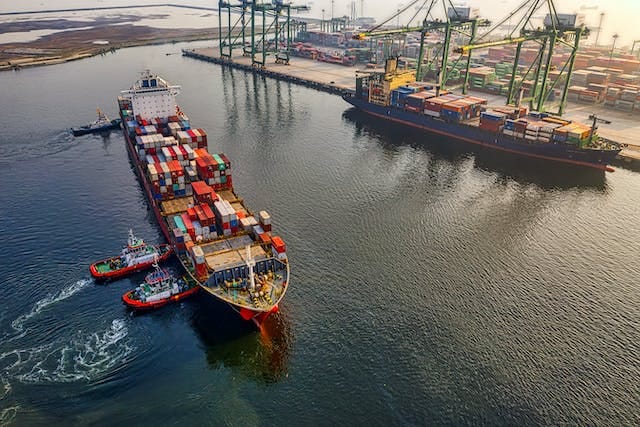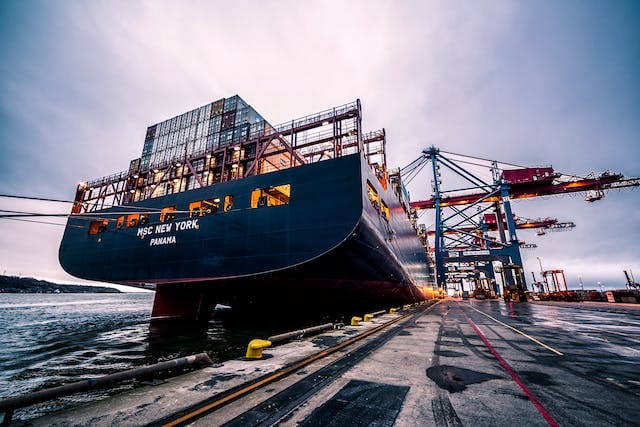Addressing Dependency on Manufacturing Hubs and Adapting to Logistical Challenges
Navigate global logistics seamlessly with strategic solutions. Overcome manufacturing hub dependencies and optimize supply chains for resilience

As a supply chain professional deeply invested in the intricacies of global logistics and trade, I've witnessed the evolution of global supply chains firsthand. The dynamic nature of this field requires constant adaptation to the ever-changing landscape of manufacturing hubs, logistical challenges, and supply chain dependencies. In this article, we will explore the evolution of global supply chains and the strategies that businesses employ to address dependencies on manufacturing hubs while tackling logistical challenges.
The Concept of Global Supply Chains
Global supply chains refer to the intricate network of interconnected businesses, suppliers, and service providers spread across different countries and continents. These chains facilitate the seamless flow of goods, raw materials, and information, enabling products to reach consumers worldwide. The concept of global supply chains has evolved rapidly over the past few decades, driven by advancements in technology, trade liberalization, and the quest for cost-efficiency. Today, global supply chains are integral to the functioning of the global economy, with virtually every industry relying on them to some extent.

The interconnected nature of global supply chains makes them susceptible to various external factors, including geopolitical tensions, natural disasters, and market fluctuations. As a result, businesses must meticulously analyze and manage these dependencies to ensure smooth operations and mitigate risks effectively.
The Impact of Manufacturing Hubs on Global Supply Chains
Manufacturing hubs, often located in regions with lower labor costs and favorable business environments, play a pivotal role in shaping global supply chains. These hubs serve as epicenters for the production of goods, attracting multinational corporations seeking to optimize their manufacturing processes and reduce production costs. The concentration of manufacturing activities in specific hubs has significantly altered the dynamics of global supply chains, leading to both advantages and vulnerabilities.
The overreliance on specific manufacturing hubs can expose supply chains to significant risks, as disruptions in these regions can have far-reaching consequences on global trade and commerce. The recent disruptions caused by the COVID-19 pandemic highlighted the fragility of supply chains heavily dependent on a few key manufacturing hubs. Consequently, businesses are reevaluating their manufacturing strategies and diversifying their sourcing locations to mitigate the impact of future disruptions.
Logistical Challenges in Global Supply Chains
Logistical challenges present a formidable obstacle in the seamless operation of global supply chains. The complexities of international transportation, warehousing, and distribution require meticulous planning and execution to ensure efficient and cost-effective movement of goods. Additionally, regulatory compliance, customs procedures, and border controls add layers of complexity to the logistical aspects of global supply chains.
In recent years, the rise of e-commerce and the growing expectations of consumers for faster delivery have further intensified logistical challenges. Meeting these demands while optimizing inventory levels and minimizing transportation costs has become a balancing act for businesses operating within global supply chains. Furthermore, environmental considerations and sustainability initiatives have prompted the adoption of greener logistics practices, adding another dimension to the logistical challenges faced by supply chain professionals.
Supply Chain Resilience and Risk Management
In the face of mounting complexities and dependencies within global supply chains, building resilience and effective risk management have emerged as critical priorities for businesses. Supply chain resilience encompasses the ability to anticipate, withstand, and recover from disruptions, thereby ensuring continuity of operations and minimal impact on customers. Robust risk management practices involve identifying vulnerabilities, developing contingency plans, and establishing agile responses to unforeseen events.
The COVID-19 pandemic served as a wake-up call for many businesses, highlighting the vulnerabilities embedded within their supply chains. Companies that had invested in building resilient supply chains and implementing proactive risk management measures were better equipped to navigate the challenges posed by the pandemic. As a result, there has been a renewed focus on fortifying supply chain resilience and integrating risk management into strategic decision-making processes.
Strategic Sourcing and Supply Chain Management
Strategic sourcing, a fundamental component of supply chain management, involves the systematic identification and selection of suppliers based on various criteria, including cost, quality, reliability, and geographical diversification. By strategically sourcing their raw materials and components from diverse suppliers and regions, businesses can reduce their dependency on specific manufacturing hubs and mitigate the impact of disruptions. This approach not only enhances supply chain resilience but also fosters healthy competition among suppliers, leading to improved quality and cost-effectiveness.
Effective supply chain management goes hand in hand with strategic sourcing, encompassing the end-to-end oversight of the flow of goods, information, and finances within the supply chain. Leveraging advanced technologies such as blockchain, artificial intelligence, and predictive analytics, businesses can optimize their supply chain management processes, enhance visibility, and proactively address potential bottlenecks or disruptions.
Addressing Supply Chain Disruption and Dependencies

The recognition of supply chain vulnerabilities and the imperative to address dependencies on specific manufacturing hubs have prompted businesses to explore alternative sourcing strategies and diversify their supplier base. By identifying secondary and tertiary sourcing options, companies can reduce the risk of disruptions caused by localized events such as natural disasters, political unrest, or trade disputes. Furthermore, fostering closer collaboration with suppliers and building long-term partnerships can contribute to a more resilient and agile supply chain ecosystem.
In addition to diversifying sourcing locations, businesses are embracing nearshoring and onshoring strategies to bring manufacturing closer to their primary markets. This approach not only reduces lead times and transportation costs but also enhances supply chain agility, allowing for quicker adaptations to changing market demands and unforeseen disruptions.
The Role of International Trade in Global Supply Chains
International trade forms the cornerstone of global supply chains, enabling the seamless movement of goods and services across borders. Trade agreements, tariffs, and trade policies significantly influence the dynamics of global supply chains, shaping sourcing decisions, production locations, and distribution networks. The evolving landscape of international trade, marked by geopolitical shifts and trade tensions, underscores the need for businesses to stay attuned to regulatory changes and geopolitical developments that could impact their supply chain operations.
Furthermore, the emergence of regional trade blocs and economic partnerships has opened new avenues for businesses to optimize their supply chains and access diverse markets. By leveraging preferential trade agreements and understanding the intricacies of trade regulations, businesses can streamline their cross-border operations and gain a competitive edge in the global marketplace.
Adapting to Transportation Issues and Inventory Management
Transportation issues, ranging from capacity constraints and port congestions to volatile fuel prices and geopolitical disruptions, pose significant challenges to the smooth functioning of global supply chains. The strategic selection of transportation modes, route optimization, and the utilization of intermodal solutions are imperative for mitigating transportation-related risks and ensuring timely delivery of goods. Additionally, the integration of real-time tracking and visibility solutions enables businesses to proactively manage transportation issues, optimize routes, and provide customers with accurate delivery timelines.
Effective inventory management serves as a linchpin in maintaining the balance between supply and demand within global supply chains. The adoption of advanced inventory optimization tools and demand forecasting algorithms empowers businesses to align their inventory levels with market demand, thereby reducing carrying costs and minimizing the risk of stockouts or overstocking. Furthermore, embracing lean inventory practices and just-in-time principles enhances operational efficiency and responsiveness to changing market dynamics.
Overcoming Trade Barriers and Supply-Demand Balance
The prevalence of trade barriers, including tariffs, quotas, and trade restrictions, can disrupt the flow of goods within global supply chains, impacting sourcing decisions and production costs. Businesses must navigate these barriers by staying informed about trade regulations, engaging in dialogue with policymakers, and exploring avenues to influence trade policies in favor of their supply chain interests. Additionally, optimizing supply chain networks to accommodate changes in trade barriers and tariffs is crucial for maintaining supply-demand balance and preserving profit margins.
Achieving a harmonious balance between supply and demand requires a comprehensive understanding of market dynamics, consumer behavior, and macroeconomic trends. By leveraging data analytics and market intelligence, businesses can fine-tune their production schedules, inventory levels, and distribution strategies to align with fluctuating demand patterns and market preferences. This proactive approach not only minimizes the risk of excess inventory or stock shortages but also enhances customer satisfaction through reliable product availability.
The Shift towards Digital Supply Chain and Resilience Strategies
The digital transformation of supply chain operations has ushered in a new era of efficiency, transparency, and resilience. Digital supply chain solutions, encompassing technologies such as IoT (Internet of Things), cloud computing, and big data analytics, offer real-time visibility into supply chain processes, enabling proactive decision-making and rapid response to disruptions. The integration of digital platforms for supply chain collaboration, communication, and document management streamlines operations and fosters agile responses to evolving market conditions.
In parallel, resilience strategies encompass a holistic approach to building adaptive and responsive supply chains, leveraging digital tools and advanced analytics to anticipate, mitigate, and recover from disruptions. These strategies involve scenario planning, stress testing supply chain networks, and fostering a culture of continuous improvement and innovation. By embracing digital supply chain solutions and resilience strategies, businesses can future-proof their supply chains and thrive in the face of uncertainties and unforeseen challenges.
In conclusion, the evolution of global supply chains has necessitated a paradigm shift in the way businesses approach sourcing, logistics, and risk management. The interplay of manufacturing hubs, logistical challenges, and supply chain dependencies requires a multi-faceted approach, encompassing strategic sourcing, resilient supply chain management, and digital transformation. By addressing these complexities and adapting to the dynamic global trade landscape, businesses can fortify their supply chains, mitigate risks, and capitalize on new opportunities, ultimately ensuring sustained growth and competitiveness in the global marketplace.
CTA: Embrace the evolution of global supply chains and fortify your business for the future. Explore strategic sourcing, resilient supply chain management, and digital transformation to thrive in the dynamic global trade landscape.




